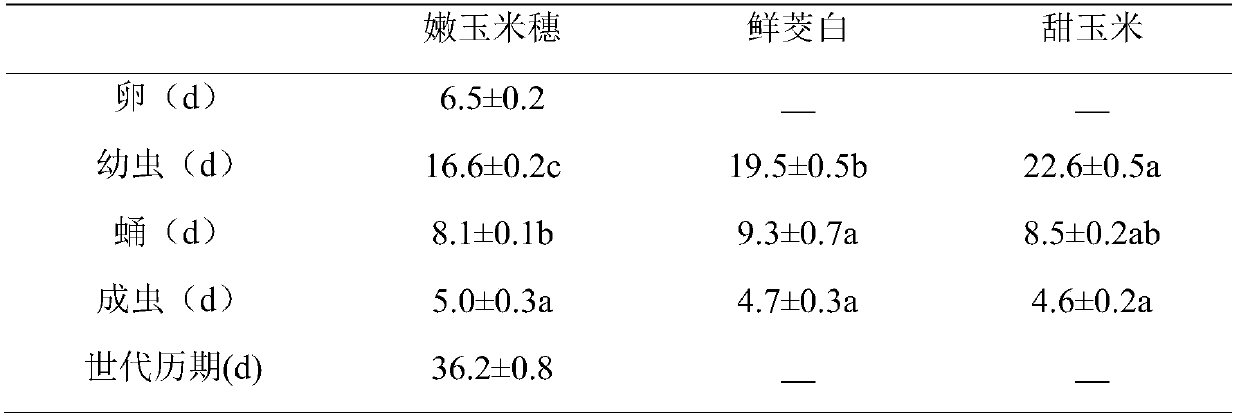A kind of method of using tender ear of corn to feed the large borer
A technology of corn cobs and tender corns, applied in the new field of breeding large borers, which can solve the problems of long rice growth cycle, high cost, and difficulty in obtaining isolated rice plants, and achieve short development time, reduce pollution, and solve the larval survival rate low effect
- Summary
- Abstract
- Description
- Claims
- Application Information
AI Technical Summary
Problems solved by technology
Method used
Image
Examples
Embodiment 1
[0022] Embodiment 1, the method for a large number of rearing of the large borer with tender ears of corn
[0023] A kind of technical method that utilizes tender ear of corn to raise the large borer, mainly comprises the following steps:
[0024] 1) Selection of ears of corn: select fresh ears of corn at the silking-grain formation stage, that is, ears of corn about 60-70 days after sowing in the corn growing season, with bracts and filaments. At the central position of the tender ear of corn for testing, cut about 3-4cm slits on the corn bracts with a wallpaper cutter.
[0025] 2) Larvae stage: After the eggs of S. arborescens turn black, put the rice stems with eggs (about 50 grains) on the incision of the tender corn ears, and put them into the corn bracts with tweezers, and then place the corn ears with One side of the incision is placed downwards, placed in the raising box (30cm×15cm×10cm), and 4-5 ears of corn can be placed in each box, that is, about 200-250 grains of...
Embodiment 2
[0030] Example 2. Comparison of the effects of feeding the large borer with tender corn ears, fresh wild rice stems and sweet corn
[0031] 2.1 Test materials and methods:
[0032] 2.1.1 Source of tested insects
[0033] The test borer was collected in the rice fields of the Gangji Agricultural Comprehensive Experimental Base of Anhui Academy of Agricultural Sciences. The larvae were collected as larvae. They were raised indoors with wild rice stems until they pupated. Eggs are laid in egg cages. After laying eggs, disinfect and moisturize the eggs, put them on the insect rack, and wait for the eggs to develop and turn black for testing. The rearing conditions for larvae are: 27±1°C, photoperiod 16L:8D, RH 60-70%, the relative humidity RH for mating and oviposition of adults should be kept at 80-85%, and the temperature and light conditions are the same as above.
[0034] 2.1.2 In vitro plants for testing
[0035] Tender ears of corn: Zhengdan 958, a conventional corn vari...
PUM
 Login to View More
Login to View More Abstract
Description
Claims
Application Information
 Login to View More
Login to View More - Generate Ideas
- Intellectual Property
- Life Sciences
- Materials
- Tech Scout
- Unparalleled Data Quality
- Higher Quality Content
- 60% Fewer Hallucinations
Browse by: Latest US Patents, China's latest patents, Technical Efficacy Thesaurus, Application Domain, Technology Topic, Popular Technical Reports.
© 2025 PatSnap. All rights reserved.Legal|Privacy policy|Modern Slavery Act Transparency Statement|Sitemap|About US| Contact US: help@patsnap.com



